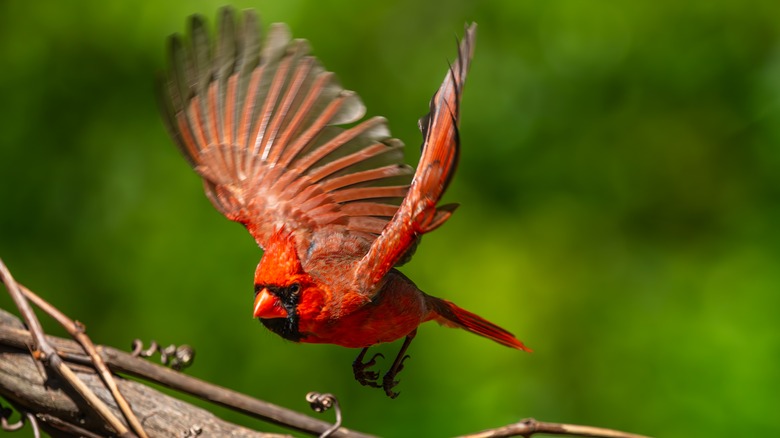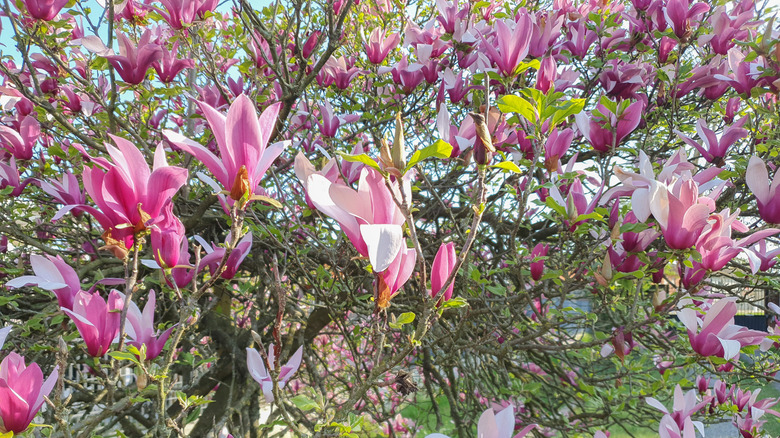This Fast-Growing Tree Loves Damp Soil And Invites Birds To Your Yard
Gardeners with a creek running through their yard, a pond, or a damp depression in the landscape should consider sweetbay magnolia (Magnolia virginiana). These trees grows fast and don't mind having damp roots, plus they're a huge draw for wildlife. Cones full of bright red seeds develop after the tree's blooms fade, attracting birds such as cardinals, woodpeckers, finches, tanagers, and grosbeaks to your yard. But, it's not just the seeds that birds find irresistible. Sweetbay hosts another source of food for chicks: the caterpillars that become butterflies and moths. The fast-growing sweetbay was deemed so beneficial that the North Carolina Audubon Society named it one of the 2016 Bird-Friendly Native Plants of the Year.
The showy, fragrant flowers of sweetbay, hardy in USDA zones 5 to 10, bloom in the spring and summer in white and off-white shades. The plant has long, oval leaves, dark green on the top with silvery undersides that shimmer in the breeze. Its 2- to 3-inch-wide flowers have a lemony aroma. Unfortunately this magnolia doesn't bloom as prolifically as the more popular Magnolia grandiflora.
Sweetbay rapidly reaches its typical full height of 10 to 35 feet; in warmer climates, trees can grow 100 feet tall. Depending on the temperatures in your region and the cultivar, the trees are deciduous (in more northern areas), semi-evergreen, or evergreen. Sweetbay, sometimes called swamp magnolia or swamp sassafras because of its tolerance for soggy soil, is equally appropriate in a shade, native, or pollinator garden as long as the soil is moist.
Growing and maintaining sweetbay magnolia
Under ideal conditions, sweetbay magnolia grows at a rate of two feet a year. Plant it in rich, acidic soil in full or partial sun and water the tree twice a week for the first few months after you've planted it. Consistently moist soil with good drainage is key, though the tree will tolerate occasional sogginess. In general, magnolias should be fertilized once a year in spring. Too much fertilizer will cause the foliage to grow at the expense of the flowers. Pruning is usually not necessary. If you live in a hardiness zone with cold and windy winters, plant the tree where it will have some protection from the elements. Sweetbay can be propagated by seed or cuttings.
There are a few problems to watch out for to ensure your magnolia flower buds bloom year after year. Sweetbay magnolia is relatively problem-free, though if the soil is too alkaline, the leaves may develop chlorosis, a condition where the leaves lose their green color. Sap-sucking scale insects can cause stunting, dieback or yellowing leaves. These pests can be removed by hand or treated with a pesticide. Weevils, another occasional problem, can be removed manually at night when the pests are active, but if your tree develops leaf spots, you'll need to determine what's causing the spots before it wreaks havoc on your trees. On the plus side, sweetbay magnolia is resistant to deer, pollution, fire, and salt spray.

